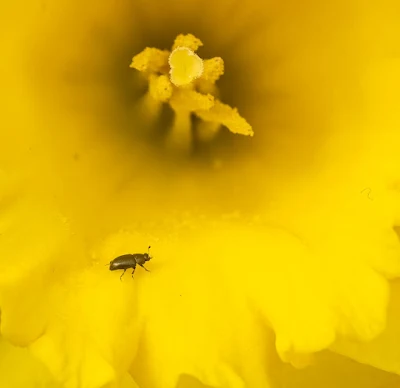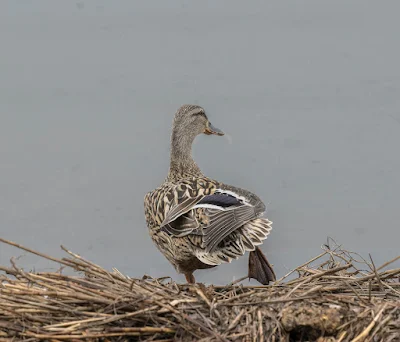I thought I would do a recce to see what was happening at Barton only to find a boggy, well soaked field with lots of mud and puddles. However, as I walked along the hedgerow I looked up to meet a man with a huge bucket of freshly picked daffodils. I was delighted to be presented with an enormous bunch and with the bonus as they had black beetles exploring the pollen. Initially, I was told this was a daffodil beetle Exosoma lusitanicum, but after watching the beetle rolling around in the pollen and on further investigation, I think it is a pollen-beetle. This is what I found:
Pollen beetles are about 2-3mm long and are black or greenish bronze with clubbed antennae. They crawl around in flowers as they feed on the pollen. Common species are Meligethes aeneus and M. viridescens, both of which breed in the flowers buds of brassica seed crops, including oilseed rape. Large populations of pollen beetles are more likely to occur in rural areas in the vicinity of oil-seed rape crops.
Pollen beetles overwinter as adults in sheltered places. They emerge in spring and can often be found in Narcissus (daffodil) flowers at that time. The females lay eggs in the flower buds of suitable host plants, which are various wild flowers and some agricultural crops, such as oil seed rape and other brassicas grown for seed.
The Daffodil beetle is destructive and eats the stems and bulbs and is often a reddish colour. I found another specimen on a dandelion flower that very bee like but I have yet to find out what it is.
After watching BBC The Magical World of Mosses this week I started looking out for mosses and noticed some highly coloured lichen. I have displayed some images I took.






















